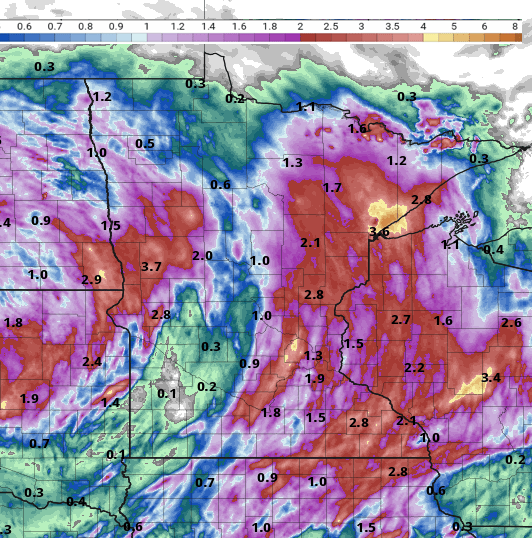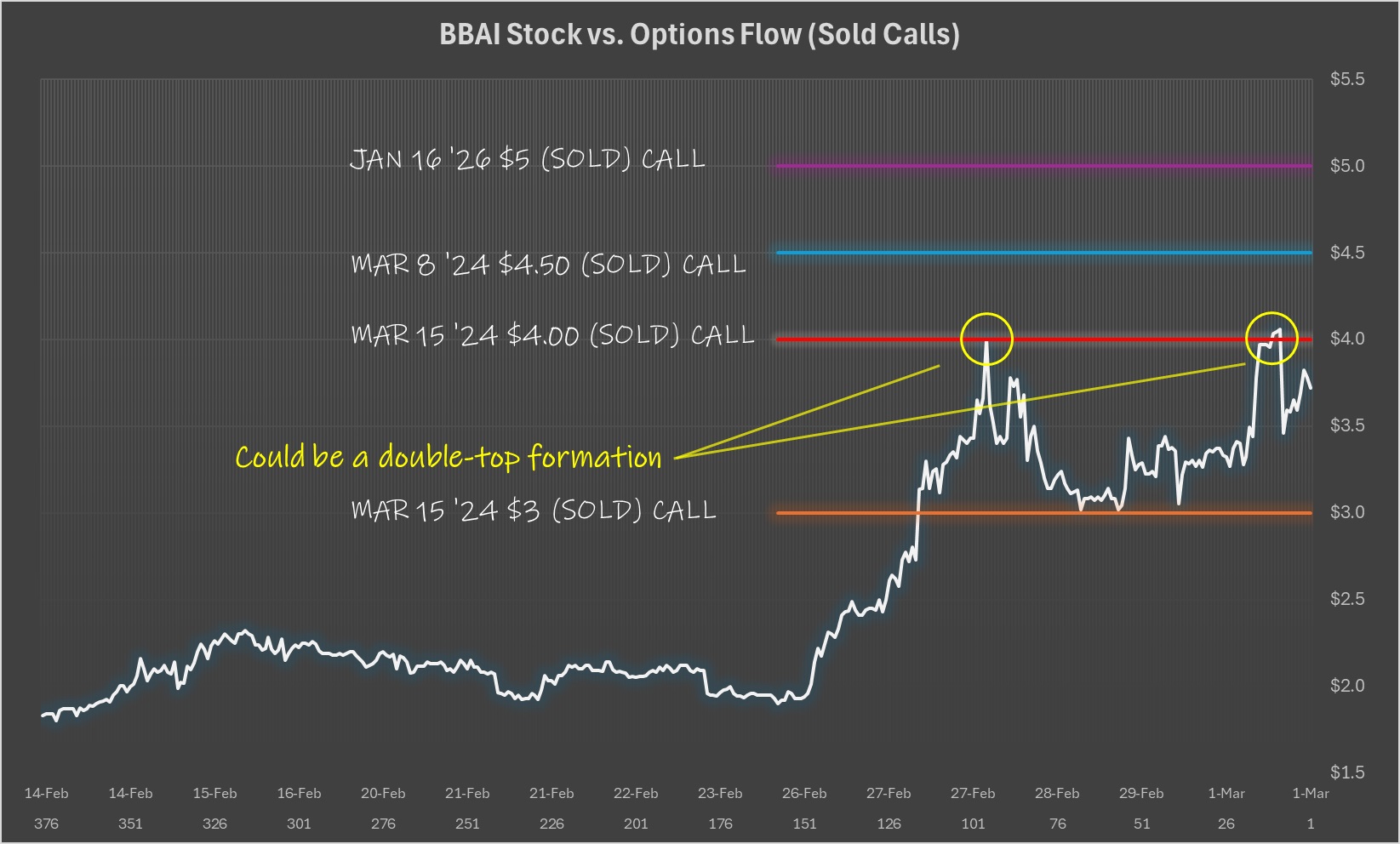Updated Rain Forecast: Knowing When Showers Will Start And Stop

Table of Contents
Understanding the Different Types of Rain Forecasts
Accurate weather prediction relies on understanding the different types of forecasts available. The time frame of the prediction significantly impacts its accuracy and application.
Short-Term Forecasts (Nowcast)
Nowcasts provide predictions for the immediate future, typically within the next hour or two. Their accuracy is generally high, especially when supported by radar imagery. However, their short timeframe limits their predictive power beyond a couple of hours. Reliable nowcasts can be found on many weather apps and specialized weather websites.
- Radar Imagery: Radar imagery is crucial for nowcasting. It shows the current location and intensity of precipitation. You can see the rain's movement and estimate its arrival time.
- Rain Intensity: Nowcasts often depict rain intensity as light, moderate, or heavy. Light rain might be a slight drizzle, while heavy rain could mean a downpour requiring immediate shelter.
Mid-Range Forecasts (1-3 Days)
Forecasts covering the next 1-3 days offer a more extended view. Accuracy decreases compared to nowcasts, influenced by the complexities of atmospheric conditions and the limitations of weather models. Probability percentages are often included, representing the likelihood of rain.
- Interpreting Symbols and Percentages: Look for forecast symbols like rain clouds or thunderstorm icons, indicating the type of precipitation expected. Probability percentages (e.g., "70% chance of rain") signify the likelihood of rain occurring within a specified area and time. A 70% chance doesn't mean it will rain for 70% of the time, but rather that there's a 70% probability of rain at some point during that period.
- Weather Model Accuracy: The accuracy of mid-range forecasts depends on how well weather models simulate atmospheric conditions and the quality of input data.
Long-Term Forecasts (3+ Days)
Long-range forecasts (3 days or more) have significantly lower accuracy than short-term forecasts. The chaotic nature of weather systems makes precise predictions challenging beyond a few days. However, they still provide valuable information regarding general weather trends.
- Limitations of Long-Range Predictions: Unexpected weather patterns and the limitations of current forecasting models make precise details unreliable. Focus on identifying general weather trends (e.g., an increased likelihood of rain throughout the week) rather than specific amounts or timing.
- Planning Purposes: While less precise, long-range forecasts help with general planning, such as deciding whether to pack rain gear for a trip.
Utilizing Technology for Accurate Rain Forecasts
Technology plays a vital role in accessing and interpreting updated rain forecast data.
Weather Apps and Websites
Numerous reputable weather apps and websites offer detailed forecasts. Look for features like interactive maps, real-time radar imagery, and customizable alerts tailored to your specific location.
- Recommended Resources: Popular and reliable options include AccuWeather, The Weather Channel, and more. Many offer hyperlocal forecasts, hourly updates, and severe weather alerts.
- Key Features to Seek: Choose apps and websites that offer features such as hyperlocal forecasts (down to your neighborhood), hourly updates, severe weather alerts, and interactive radar maps.
Utilizing Smart Home Devices
Smart home devices can integrate with weather data, providing automatic alerts and responses. This can include closing windows when rain is imminent or automatically turning on sprinklers when rain is not expected.
- Smart Home Integration: Devices like Amazon Alexa or Google Home can provide real-time weather updates and trigger automated actions based on the updated rain forecast.
- Benefits and Limitations: While convenient, remember that smart home integrations rely on the accuracy of the underlying weather data.
Interpreting Rain Forecast Data
Understanding how rainfall is measured and interpreting the uncertainties are key to using forecasts effectively.
Understanding Rainfall Amounts
Rainfall amounts are typically measured in inches or millimeters. The amount of rainfall significantly impacts outdoor activities. A light shower might be a minor inconvenience, while a heavy downpour could cause significant disruption.
- Impact of Rainfall Amounts: A light shower (less than 0.1 inches) might only require a light jacket, while a heavy downpour (over 1 inch) necessitates seeking shelter.
- Localized Differences: Remember that rainfall can vary significantly within short distances, so always check forecasts for your precise location.
Identifying Uncertainties in Forecasts
Weather forecasting involves inherent uncertainties. Unexpected weather patterns, limitations in weather models, and the complex nature of atmospheric systems can all affect forecast accuracy. Check updates regularly for the most up-to-date information.
- Factors Affecting Accuracy: Temperature variations, unexpected shifts in wind patterns, and even the accuracy of initial data input into weather models can all influence the final prediction.
- Regular Updates: Remember that forecasts are constantly refined as new data becomes available. Checking multiple times a day, especially before outdoor activities, is always recommended.
Conclusion
Effectively using updated rain forecasts involves understanding the different forecast types, utilizing technology for accurate data, and interpreting the information correctly. By combining knowledge of short-term, mid-range, and long-term predictions with reliable technology and a keen eye for potential uncertainties, you can confidently plan your day around the weather. For the most accurate rain forecast information, check trusted sources regularly. Stay updated with your updated rain forecast for better planning.

Featured Posts
-
 The Amazing World Of Gumball Streaming Now On Hulu And Disney
May 21, 2025
The Amazing World Of Gumball Streaming Now On Hulu And Disney
May 21, 2025 -
 Unexpected Splash Susan Lucci And Michael Strahans Water Fight
May 21, 2025
Unexpected Splash Susan Lucci And Michael Strahans Water Fight
May 21, 2025 -
 Big Bear Ai Bbai Penny Stock Potential And Investment Risks
May 21, 2025
Big Bear Ai Bbai Penny Stock Potential And Investment Risks
May 21, 2025 -
 New Competitive Concept Introduced At Wtt Press Conference
May 21, 2025
New Competitive Concept Introduced At Wtt Press Conference
May 21, 2025 -
 Plan Your Trip The Ultimate Guide To Peppa Pig Theme Park Texas
May 21, 2025
Plan Your Trip The Ultimate Guide To Peppa Pig Theme Park Texas
May 21, 2025
Latest Posts
-
 1 1
May 22, 2025
1 1
May 22, 2025 -
 Guardiolas Exit Manchester City Linked With Arsenal Legend As Potential Replacement
May 22, 2025
Guardiolas Exit Manchester City Linked With Arsenal Legend As Potential Replacement
May 22, 2025 -
 Defining The Sound Perimeter Musics Influence On Social Cohesion
May 22, 2025
Defining The Sound Perimeter Musics Influence On Social Cohesion
May 22, 2025 -
 The Sound Perimeter Effect How Music Creates Community
May 22, 2025
The Sound Perimeter Effect How Music Creates Community
May 22, 2025 -
 Exploring The Sound Perimeter The Science Of Musical Connection
May 22, 2025
Exploring The Sound Perimeter The Science Of Musical Connection
May 22, 2025
